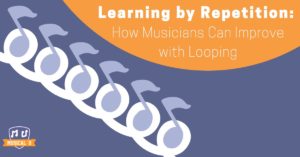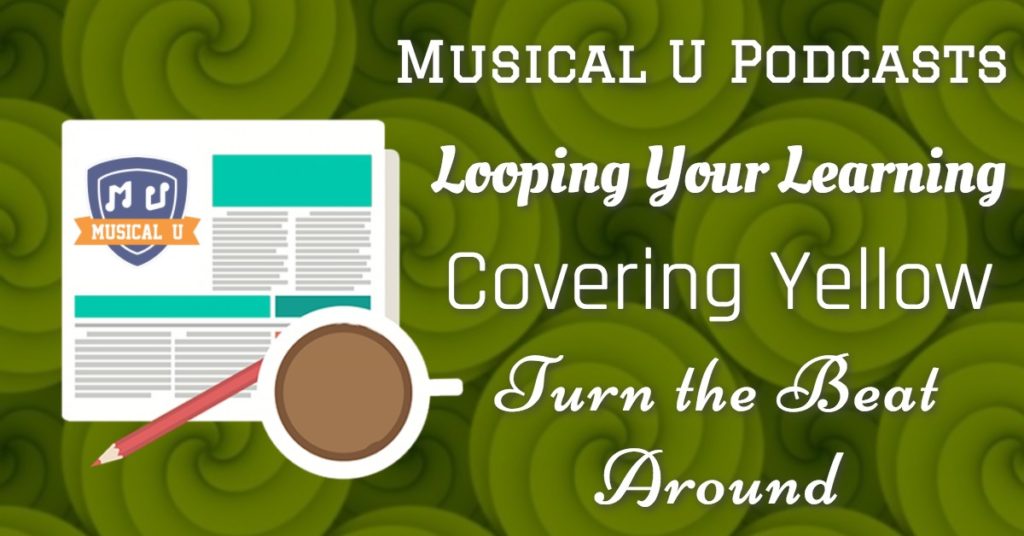Turn, turn, turn…
The world of music is full of cycles. Musical styles come and go and come again, new songs become old songs and are renewed through covers. Syncopated rhythms move in contrary cycles to expected beat patterns. And Musical U enters a new cycle of weekly podcasts:
Open Your Ears to Musical U
 At Musical U we are passionate about helping you express yourself in music. What appears as “natural” musicality is actually a combination of learnable skills – skills that are rarely taught in traditional music education.
At Musical U we are passionate about helping you express yourself in music. What appears as “natural” musicality is actually a combination of learnable skills – skills that are rarely taught in traditional music education.
We began with apps, moved on to publishing 1000 + and counting free articles in our blog, and over 40 Musical U learning modules on all aspects of musicality, ranging from ear training to getting confident.
But now we’re taking the next step.
Musicality training does take some time, and we know that you’re busy. But there are so many times during the day – commuting to work, waiting in line, even exercising at the gym – that could be put to effective use and move you forward in your drive to become a natural musician.
So we’ve pooled together the best minds in modern musicality to produce a fascinating series of audio episodes – a mix of interviews and teaching – so you can continue to receive inspiration and training, anytime, anywhere. Read more about this next step in your becoming more musical in Announcing: The Musical U Podcast!
A podcast is like an online radio show that you can listen to on-demand, whenever you want. And, as always, we keep putting the “U” in Musical U by reaching out to our email subscribers to give us their input, and with podcast previews and behind-the-scenes exclusives. Enhance your listening experience and sign up for Podcast Insiders for free.
Caroline Pennell Turns Yellow
 Covers have been around forever, but YouTube has brought the art of the cover to new heights (and sometimes depths!). Popular “Voice” alum Caroline Pennell transforms Coldplay’s searing indie ballad “Yellow” into a haunting embrace, pulsating with hand drums and rolling acoustic guitars. Compare them, and you’ll learn much about musical form, instrumentation, and the process of producing in Before and After: Covering Coldplay.
Covers have been around forever, but YouTube has brought the art of the cover to new heights (and sometimes depths!). Popular “Voice” alum Caroline Pennell transforms Coldplay’s searing indie ballad “Yellow” into a haunting embrace, pulsating with hand drums and rolling acoustic guitars. Compare them, and you’ll learn much about musical form, instrumentation, and the process of producing in Before and After: Covering Coldplay.
Recording a new song requires a lot of decisions before committing any sounds to tape. With so many creative decisions, how can you possibly think about all the other aspects of recording? Who has that much time? Fortunately, websites like The Recording Revolution can show you how to record a song from scratch.
There are so many different options available once you decide that you are ready to finally record your new single or album. As we saw in this article, Caroline Pennell was able to make her mark through a single rather than a full album. Sonic Scoop talks more about the advantages of recording singles rather than full albums.
Caroline was able to get her start by being a competitor on The Voice. Competitions have also become a high-hype launch vehicle for classical musicians. But most of us will never get that big of a stage to showcase our talents. Without such a large platform, how can you make a name for yourself to start making a living with your music? Bach Tracks shares 10 Tips to making a living in music… without winning a competition.
Whenever we talk about cover songs, we spend a bit of time talking about how the structure of the song is often changed. This greatly changes the dynamics of a song and can bring in a listener’s attention… or cause them to change the station. Robin Wesley will reveal the secret to capturing the attention of the audience in less than 30 seconds.
Rhythm-me-this
Read this sentence in the stuffiest hoity-toity attitude you can muster: “Rhythmic regularity is firmly established by accenting certain pre-determined beats in the measure.”
Now once that is established, what happens when you throw the accent onto those other beats? Or even off the beat?
Now this: “RhythMIC reGUlarITy is firmLY estabLISHED by acCENTing cerTAIN pre-DEtermined beats IN the meaSURE.” Voilà, syncopation:
Syncopation brings rhythm to life. Even though it is everywhere, sometimes it’s hard to break it all down and dig into rhythmic goldmine in a way that’s useful. Take this fun approach in Playing Around the Beat: Syncopation.
And for a more indepth look, Get Rhythm: Syncopation.
Are you ready to practice syncopation on your instrument? It can often be difficult to translate music theory into your practice, especially with new concepts. But practicing your newfound knowledge will help to internalize the lessons and make it a part of your musical mastery! Jeff Rolka has great tips on how to practice syncopation:
Syncopation can be incorporated into music in many different fashions. A unique way of using syncopation on a stringed instrument is to mute the strings to create that “space” between the notes and get off the main beat. Learn more about this method with this muted strums tutorial from Ukulele Hunt.
How else can the stringed instrument player use syncopation in their music? How about through their strumming patterns? By varying your strum, the rhythm will naturally become syncopated and add interest to the music. To see how the experts have incorporated this, The Guitar Lesson has a tutorial showing how the guitar added syncopation to the Oasis song “Whatever”.
Where else can your new understanding of rhythm take you? How about into the world of composition? While standard classical music is typically fairly tame in the syncopation department, it can be quite flagrant in nearly every other form of music. This is especially true in pop, rock, jazz, and many other popular forms.
If you’re looking for a good start in the composition department, Oliver Lugg takes us through his guide to music composition.
Loopy
 Looping has now been around now for a while, and many artists wow us with their ability to layer and control vast sound resources with nary a whine from the “band”.
Looping has now been around now for a while, and many artists wow us with their ability to layer and control vast sound resources with nary a whine from the “band”.
However, did you know that beyond the effect, looping can be an amazing tool for learning and improving your musicianship on several fronts. Our guest author Noah Peterson (from Looping Live) demonstrates Learning by Repetition: How Musicians Can Improve with Looping.
”Nothing gets you better faster than listening to yourself.” We learned this in our article on looping. Becoming comfortable with hearing yourself play is difficult for many musicians, and can be hard to overcome. But recording your playing is so beneficial to your overall growth as a musician. Wired Guitarist explains why recording yourself leads to success.
Looping can be a very effective way of enhancing your practice sessions and become inspired once again. Musicians can often plateau, just like athletes, and can have a hard time progressing to the next stage in their growth.
What else can you do to break out of your routines and inspire new growth? Anne from Harp Mastery has some suggestions on creative music practice to help you grow.
A looping pedal isn’t the only pedal that can greatly enhance your creative juices. Piano players have three pedals at their disposal that make fantastic additions to their music. If you haven’t yet picked up the piano, it makes a fantastic second instrument! Here is PianoCub to talk about three pedal techniques that pianists need to know.
Are you ready to get started looping in your musical practice, but unsure of where to begin and how to use this new technology? Marty Music has some useful practice tips on looping pedals for guitarists:
Round and Round We Go
Looping your way into musical mastery? Helping an old song turn over a new leaf? Ready to “Turn the Beat Around” with syncopation?
Then enjoy this week’s offerings on Musical U! And while you are at it, why not sign up for Podcast Insiders and get ready to turn your virtual radio dial to your own next step in musicality?







